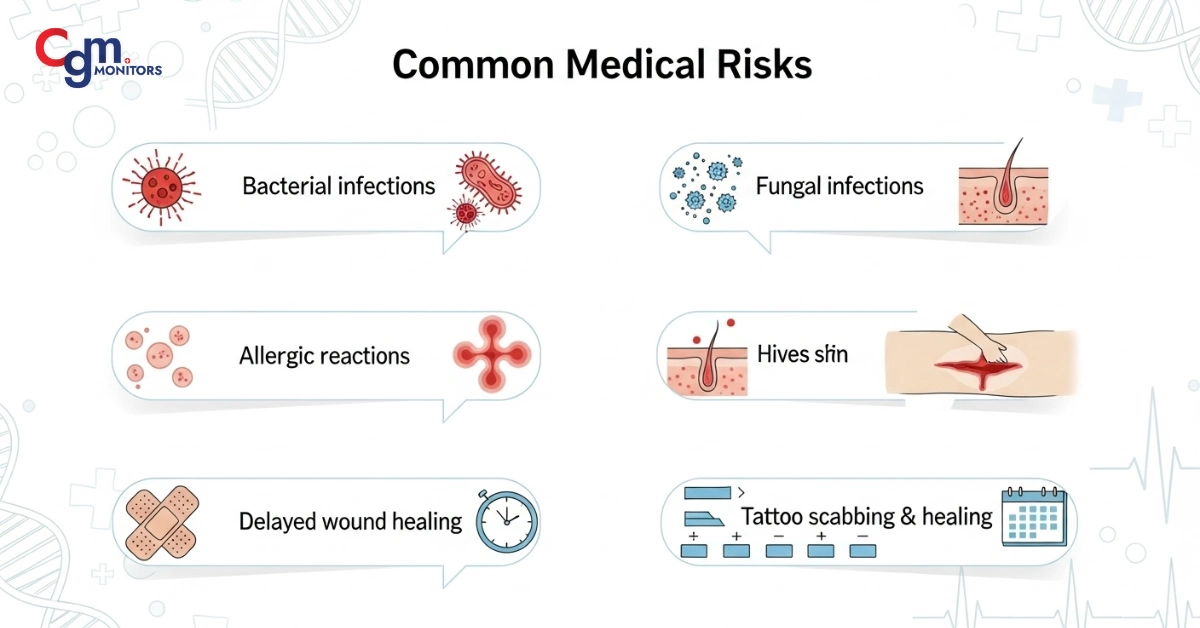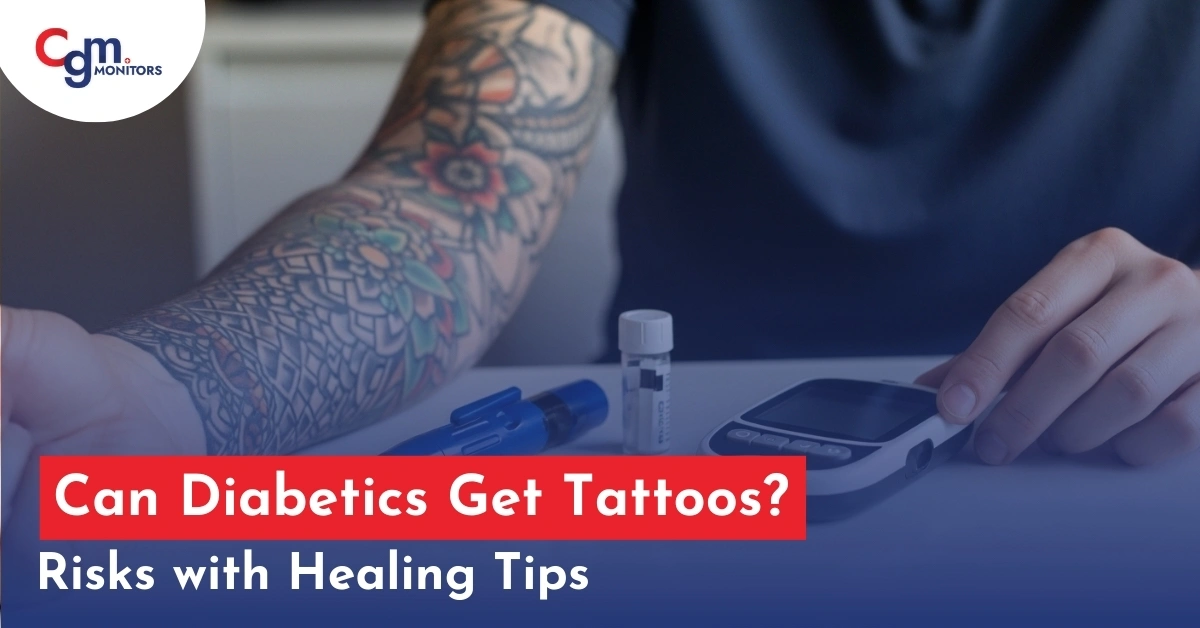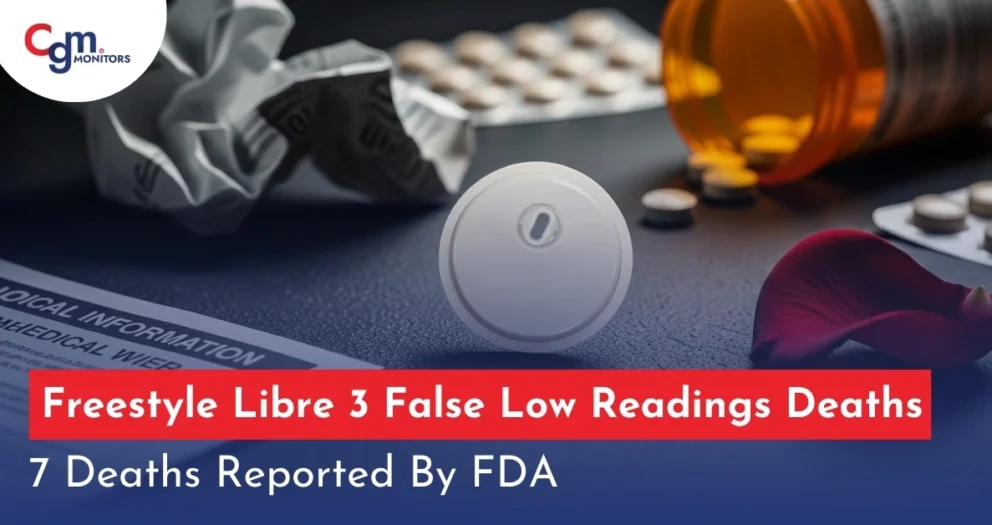Table of content
- Can Diabetics Get Tattoos? The Straight Answer
- How Diabetes Affects Your Skin and Healing
- The Medical Risks of Tattoos in Diabetes
- When Diabetics Should Avoid Tattoos
- Worst Tattoo Locations for Diabetics
- Tattoo Studio Safety: What to Ask
- Tattoo Aftercare: What You Must Do
- Alternatives for High-Risk Diabetics
- Doctor’s Advice Before Tattooing
- Quick Reference Table: Tattoos and Diabetes
- Conclusion:
- Frequently Asked Questions
Can diabetics get tattoos? If you are living with diabetes mellitus, this question has probably crossed your mind. A tattoo is more than art. It’s a wound made by thousands of tiny needle punctures. In people without diabetes, the skin usually heals without major issues. But when you have diabetes, the healing process is often slower and riskier.
The truth is: yes, you can get a tattoo with diabetes, but only if your blood sugar is well-controlled and you follow medical precautions. If your diabetes is uncontrolled, the risks increase, such as infection, delayed healing, scarring, and long-term skin complications.
In this guide, we will go through the medical risks of diabetes, the best and worst locations of tattoos for healing, the doctor’s advice before healing, the scabbing and healing timeline of tattoos, and aftercare steps to protect your skin.
Can Diabetics Get Tattoos? The Straight Answer
Tattoos are made using a tattoo machine, which works like a sewing machine, inserting pigment ink into your skin. If you are dealing with diabetes, whether it’s Type 1 or Type 2, it can impact how your body heals. When you get a tattoo on your skin, your body will slowly repair the wound itself if you are managing your diabetes with the help of CGM monitors like FreeStyle Libre 3 Plus or Dexcom G7. But when you have diabetes, the collagen formation process is slow due to high blood sugar.
People with well-controlled diabetes can usually get tattoos safely. However, tattoos are not recommended for patients with poor blood sugar control, diabetic neuropathy, or vascular complications. So, the short answer is: yes, but with strict safety precautions and medical clearance.
How Diabetes Affects Your Skin and Healing
Your body responds differently to tattoos because of diabetes-related changes:
- High blood sugar → slows down wound healing.
- Delayed wound healing → due to impaired circulation.
- Diabetic neuropathy → You may not feel early signs of infection, especially in your feet and legs.
- Compromised immune response → making infections harder to fight.
- Diabetic vasculopathy → poor circulation reduces oxygen and nutrients to the skin.
- Diabetic retinopathy → shows that blood vessels are already compromised, which also slows skin repair.
Poorly controlled diabetes can turn what should be a minor wound into a chronic skin ulcer. This risk is especially high in the feet, ankles, and shins, where blood flow is reduced.
The Medical Risks of Tattoos in Diabetes
For people with diabetes, this comes with additional risks:
- Bacterial infections such as cellulitis, abscess, or even sepsis
- Fungal infections are mostly present in moist or sweaty regions
- Allergic reactions to some pigment inks, especially those that are in red and yellow coloring, can lead to rashes or granulomas on the skin
- Delayed wound healing: Tattoos can take a long time to scab, heal slowly, and have a higher chance of scarring.
- Tattoo scabbing and healing timeline: Typically, most tattoos take 2-3 weeks to heal; however, if you have diabetes, the healing process may take 4-6 weeks or longer.
- Severe complications: Ulcers, gangrene, and, in rare cases, amputation if infection spreads.

When Diabetics Should Avoid Tattoos
Avoid tattooing if you have:
- HbA1c above 8%.
- Diabetic neuropathy or retinopathy (loss of sensation in feet/legs)
- Diabetic retinopathy or vasculopathy.
- History of foot ulcers or chronic skin wounds.
- Immunosuppression (HIV, chemotherapy, or steroid therapy).
- Any active infection or open wound.
If any of these apply, tattooing poses a high risk of complications and should be avoided. You will wonder what the actual difference of A1c and Gmi. Read our best guides that give you accurate information about A1C vs GMI.
Worst Tattoo Locations for Diabetics
| Safer Locations | Avoid These Areas |
| Upper arms | Feet and ankles (neuropathy + poor healing) |
| Shoulders | Shins and calves (low circulation) |
| Upper back | Hands and fingers (friction, infection risk) |
| Thighs (front/outer) | Abdomen (especially if using insulin or CGM devices) |
Tip: If you have neuropathy, avoid legs and feet completely. A dermatologist can examine skin health before tattooing to identify suitable areas.
Tattoo Studio Safety: What to Ask
Not all tattoo studios are safe. Ask your artist:
- Do you use tattoo needle sterilisation equipment (autoclave)?
- Are inks FDA-approved? (FDA tattoo ink safety regulations warn about unsafe pigments and heavy metals).
- Do you use single-use gloves and ink caps?
- Can I see the equipment unsealed in front of me?
Tip: If the artist hesitates to answer or show proof, walk away. For diabetics, even a small lapse in hygiene can lead to dangerous infections.
Tattoo Aftercare: What You Must Do
Healing doesn’t stop at the studio; it depends on you.
- Keep the tattoo covered for the first 24 hours.
- Wash gently with fragrance-free soap.
- Apply a thin layer of ointment (doctor-recommended).
- Avoid swimming pools, hot tubs, or direct sun until fully healed.
- Never scratch or pick scabs.
- Track your tattoo scabbing and healing timeline daily.
- Monitor your blood sugar closely; high glucose slows healing.
Alternatives for High-Risk Diabetics
If tattoos are not safe for you:
- Henna or temporary tattoos for short-term body art.
- Medical alert tattoos (done cautiously) for conditions like “Type 1 Diabetes.”
- Medical ID bracelets/necklaces – safest for emergencies.
Doctor’s Advice Before Tattooing
Always consult your endocrinologist or primary doctor before booking.
Doctor’s medical checks may include:
- HbA1c test – Aim for <7.0%.
- Skin and foot exam – To check for ulcers or infections.
- Circulation test – Especially in the legs and feet.
- Medication review – Blood thinners and steroids may delay healing.
Practical expert tips:
- Check blood glucose before and after your session.
- Use a continuous glucose monitor (CGM) for close tracking.
- Adjust insulin if stress or delayed healing affects glucose.
- Inform your tattoo artist so they allow breaks if needed.
Clinical insight: Controlled Type 1 diabetes patients generally heal tattoos without complications. Uncontrolled Type 2 diabetes patients often face prolonged healing and infections.
Quick Reference Table: Tattoos and Diabetes
| Factor | Safe for a Tattoo? | Risk Level |
| Good blood sugar control | Yes | Low |
| HbA1c > 8% | No | High |
| Foot or ankle tattoos | No | Very High |
| Upper arm/thigh tattoos | Yes | Low |
| History of ulcers | No | High |
| Signs of infection after a tattoo | Emergency | Very High |
Conclusion:
Yes, patients who are managing with diabetes get tattoos, but when you follow the precautions and are careful. If your blood sugar is stable, your A1C is controlled, you choose the best and safest studio with strict sterilization practices you get a tattoo without any serious risks. But if your diabetes is uncontrolled, you may face serious problems like infection, scarring, or even amputation.
Before you commit, consult your doctor, check your AC1, choose a safe location, and follow aftercare strictly. Your health comes first. If you are using a CGM device from CGM monitors that track your glucose levels during the healing process. Tattoos can wait, but complications cannot.
References:
- Tattoos and piercings with diabetes | Diabetes UK
- Continuous Glucose Monitoring–Derived Data Report—Simply a Better Management Tool | Diabetes Care | American Diabetes Association
Frequently Asked Questions
Can diabetics get tattoos safely?
Yes, with good blood sugar control, clearance from your clinician, and strict studio hygiene, many people with diabetes tolerate tattoos without complications.
Should I tell my tattoo artist I have diabetes?
Yes. Tell the artist so they can schedule breaks, avoid risky locations, and be alert to problems during the session.
Does my blood sugar drop when getting a tattoo?
Not typically. Stress, pain, or fasting before a session can change glucose levels — monitor and treat as needed.
Best body parts for tattoos if I have diabetes?
Areas with good blood flow (upper arm, shoulder, outer thigh) are generally lower risk than the feet, ankles, hands, or lower legs.
How long will my tattoo take to heal with diabetes?
Typical healing is 2-3 weeks; with diabetes, healing may extend to 4-6 weeks or longer, depending on glucose control. Keep close follow-up with your clinician if healing is delayed.
Special aftercare tips for diabetics?
Keep the area clean and dry, follow the studio’s aftercare, watch glucose closely, and seek prompt medical attention for redness, increasing pain, pus, or fever.
When should diabetics avoid tattoos?
If you have uncontrolled hyperglycemia, active foot ulcers or infections, severe neuropathy, or poor circulation, delay tattooing until a clinician clears you.







Write a comment
Your email address will not be published. All fields are required